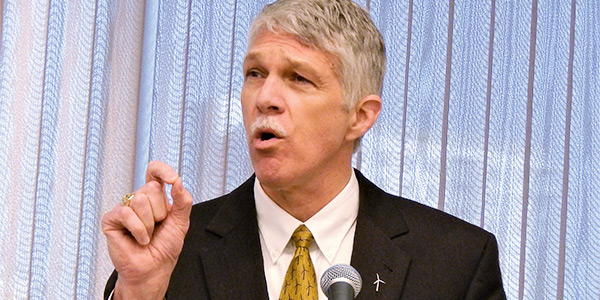By Tom Kleckner
The American Wind Energy Association’s (AWEA) annual market report on the wind industry, released Tuesday, marks off one record achievement after another.
U.S. wind capacity grew another 8% last year, helping the industry support a record 114,000 jobs, more than 500 domestic factories and more than $1 billion a year in revenue for states and communities hosting wind farms.
Credit that to the 2020 wind-down of the production tax credit, said AWEA CEO Tom Kiernan.
But how does the end of tax credits help the wind industry if that means it becomes one of the few energy sources without some sort of tax support?
Kiernan said the 2015 extension of the PTC, which included a phased end of tax credits, provided the certainty the wind industry needed after years of on-again, off-again legislation in Washington, D.C. He said the “longer-term policy” was just what AWEA had been looking for, as it created an incentive for further investment in the industry and its technologies.
Kiernan said major turbine designers have all announced new designs, adding longer blades, newer technologies, digitization and “other factors that will continue to increase our productivity.” Noting developers have added roughly 8 GW of wind energy each year since 2015, he said he expects the growth to continue, if not increase, over the next few years.
“Because of that long-term policy, [wind] companies have been able to make investments and keep driving down costs,” Kiernan said. “After the PTCs phase off, there will probably be a softening, but because of that five-year horizon, we’ll be two to three years into our next product cycle. We still think we’ll be able to compete with solar, storage and gas.”
AWEA projects a “record amount” of wind generation to come online in the near future. It says more than 35 GW of capacity is either under construction or in advanced development across 31 states.
‘Americans Want It’
Wind energy now stands at 96.4 GW of cumulative installed capacity, more than double what it was in 2010. AWEA says the United States now has enough installed wind energy to power more than 30 million homes. According to the report, wind energy now “reliably delivers” more than 20% of the electricity produced in six states: Iowa, Kansas, Maine, North Dakota, Oklahoma and South Dakota.
Kiernan attributed the growth to corporate and industrial purchases of wind energy — 11.3 GW of clean wind energy because “Americans want it” — and utility purchase agreements.
“Fifty percent of Americans are more likely to buy products from a company that purchased wind energy,” Kiernan said, citing a Yale University poll. “Wind energy is the cheapest source of new electricity on an unsubsidized basis. Utilities are buying it because it’s clean but also affordable.”
To ensure the momentum continues, Kiernan said AWEA is encouraging the continued advancement of tax-abatement policies and other legislation at the state level, while asking for a focus on transmission infrastructure at the federal level.
“Our transmission grid is outdated and not built out to provide clean energy sources for the future,” he said, drawing comparisons to the interstate highway system. “We’re asking Congress to do a better job of permitting transmission, and we’re calling on FERC to do the interregional planning.”
Kiernan said transmission should be a key element in any infrastructure package Congress is working on, and it should include an element “requiring FERC to call on RTOs to do joint planning.”
“[Planning] should be done the same way and at the same time in addressing joint projects,” he said. “Connecting these different grids will allow more efficiency in connecting wind projects to the grid.”
Success in Texas
AWEA officials chose to announce its annual market report in Texas partly because Houston will be the site of its May 20-23 WINDPOWER Conference and Exhibition, billed as “the Western Hemisphere’s largest gathering of the people and technology driving wind power trends.”
But Texas is also a “living, breathing example of what’s happening nationally,” Kiernan said.
AWEA says if Texas were a country, it would rank fifth globally in wind energy capacity, with nearly 25 GW of installed capacity. Texas is home to about a quarter of the nation’s wind capacity, and the 7 GW of additional projects under construction or in advanced development is more wind than all but two other states have installed.
The state’s Competitive Renewable Energy Zones transmission buildout, which connected West Texas wind farms with urban population centers, serves as a model of the type of legislation the organization would like to see nationwide.
“The Texas success story is very much an American success story,” Kiernan said.
AWEA’s 2018 market report is just the latest annual or quarterly report it provides. The report includes market rankings of major players, state-by-state details, economic and environmental impacts and assessments of power offtake, wind capacity ownership and project finance.






